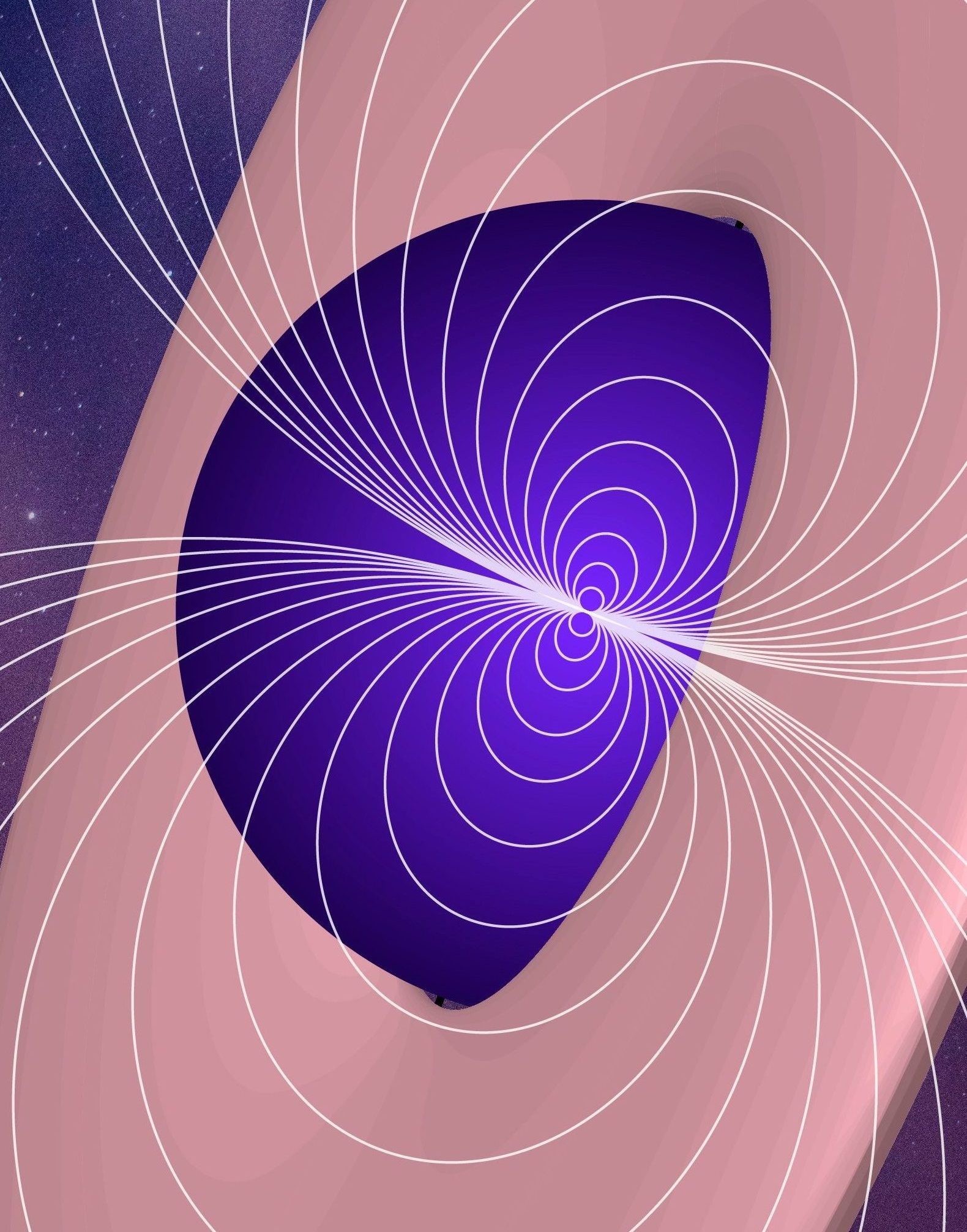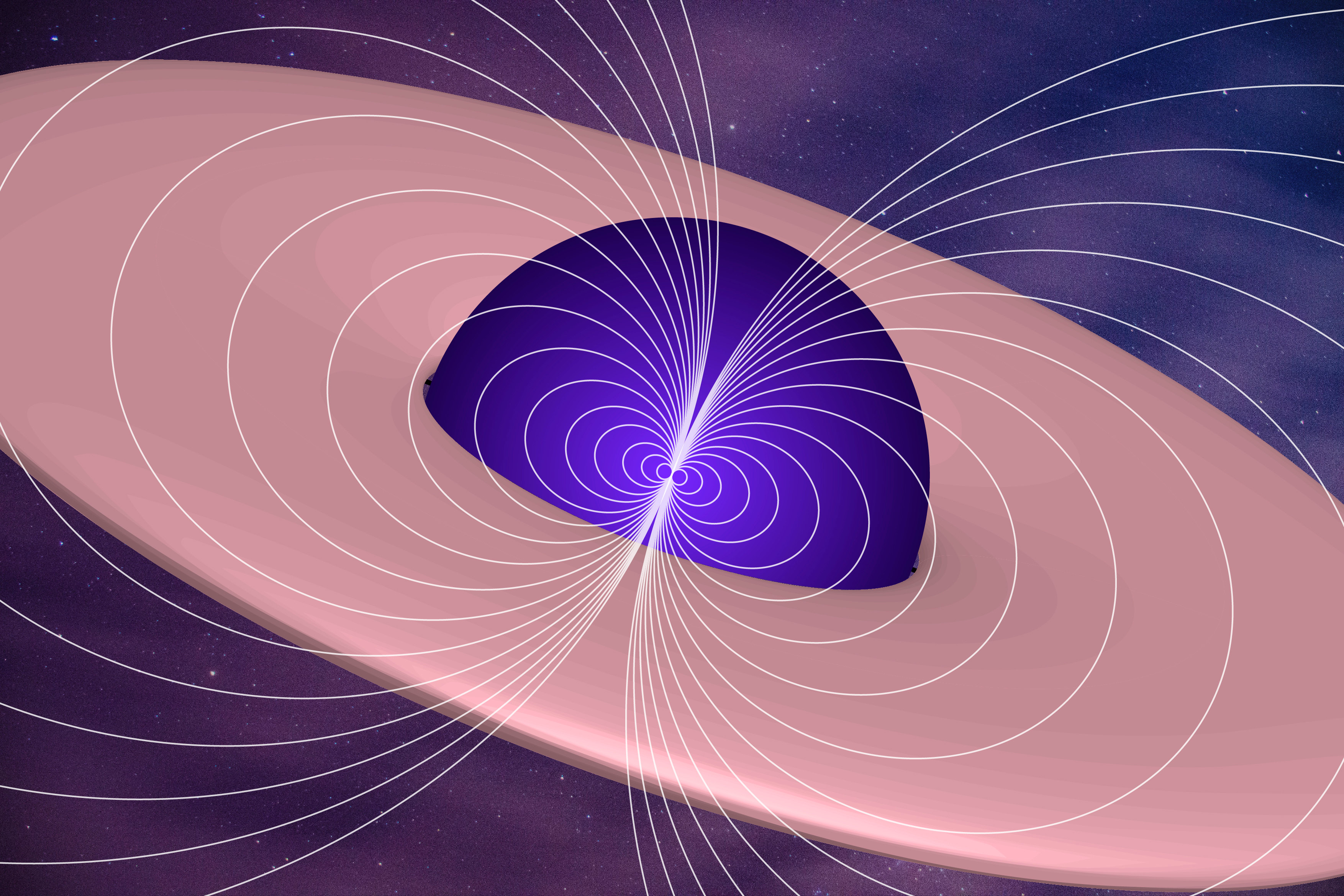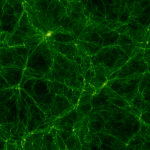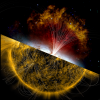
Researchers from the Institute of Theoretical and Experimental Astronomy (IATE) have participated in a theoretical study of the possibility that magnetic fields were generated from black holes that emerged in the early stages of the Universe.
By Facundo Rodriguez
facundo.rodriguez@unc.edu.ar
13.7 billion years ago the Big Bang occurred, the explosion that created the Universe, and within a second of that explosion, the so-called primordial black holes formed. There was not any material like the ones we observe today yet, only charged particles at high temperatures. This plasma, however, was not completely homogeneous and the small fluctuations present there, due to the violent expansion that occurred a fraction of a second after the big explosion, collapsed to form objects of infinite density. The latter are called primordial black holes and, unlike the other known black holes, they may have a wide range of masses where the smallest may be only a few grams. Their existence has not yet been confirmed, but trying to understand more about them helps us both to understand the early Universe and the current quantities of different types of matter.
In parallel to the theoretical developments that explain the first instants of the Universe, in the last decades, some research teams have found that the cosmos exhibits magnetic fields on different scales. That is to say, just as magnets are held in our refrigerator, charged particles in motion generate similar phenomena around the Earth, the Sun, galaxies and even in larger structures. However, one big question surrounding these magnetic fields is how they originated. One hypothesis is that, like primordial black holes, they originated in the early stages of the Universe.
While it seems obvious from the two previous paragraphs that a possible connection between magnetic fields and primordial black holes should be studied. The complexities in approaching each of these topics caused the first team to take up this challenge was the one formed by research groups from IATE and the Chilean universities Arturo Prat and Pontificia Universidad Católica de Chile.

Artist's illustration of a primordial black hole with a magnetic field. Credits: Rocío Rodríguez.
Combining ingredients
"In previous work, we had analysed black holes as Dark Matter candidates and we had a way to establish how many black holes there are of different masses. On the other hand, Federico Stasyszyn and Marcelo Rubio from IATE had studied mechanisms of magnetic field generation. Then the assumption arose according to which one could endow these black holes with magnetic fields using some of these mechanisms and, in this way, predict a large-scale primordial magnetic field," explains Ignacio Araya, a researcher in Gravitation and High Energy Physics at the Instituto de Ciencias Exactas y Naturales (ICEN) of the Universidad Arturo Prat in Chile. He also adds that the link between these researchers was made possible by Nelson Padilla, a researcher at the Pontificia Universidad Católica de Chile and a corresponding researcher at IATE.
The authors claim that the main result of the work published in Monthly Notices of the Royal Astronomical Society journal comes from their joint work where they developed a robust method for generating magnetic fields on cosmological scales, arising from primordial black holes. This allowed them to take into account two mechanisms of magnetic field generation in the current study and also gives them the possibility to include other mechanisms in future studies. Another important result is that, although they carried out a theoretical study, the values found for the magnetic fields could in some cases correspond to those obtained from observations. This gives reliability to both the magnetic and primordial black hole hypotheses and allows them to rule out others.
Future perspectives
Following the success of the method developed, the team hopes to continue investigating the mechanisms of magnetic field formation, the generation and distribution of primordial black holes, and also the joint processes that could affect both. Moreover, as a result of the confluence of the topics addressed and the synergy of the joint work, the team that carried out the research has formed the BADFIG (Black holes As Dark Matter and Field Generation) group. The name, in addition to referring to the areas of study, arose from the fact that, on submitting the work for publication, due to the value of what was presented, the only criticism they had was that the texts of the figures presented should be improved.
Scientific publication |
| Magnetic field generation from primordial black hole distributions Authors | I. J. Araya, M. E. Rubio, M. San Martín, F. A. Stasyszyn, N. D. Padilla, J. Magaña & J. Sureda |








